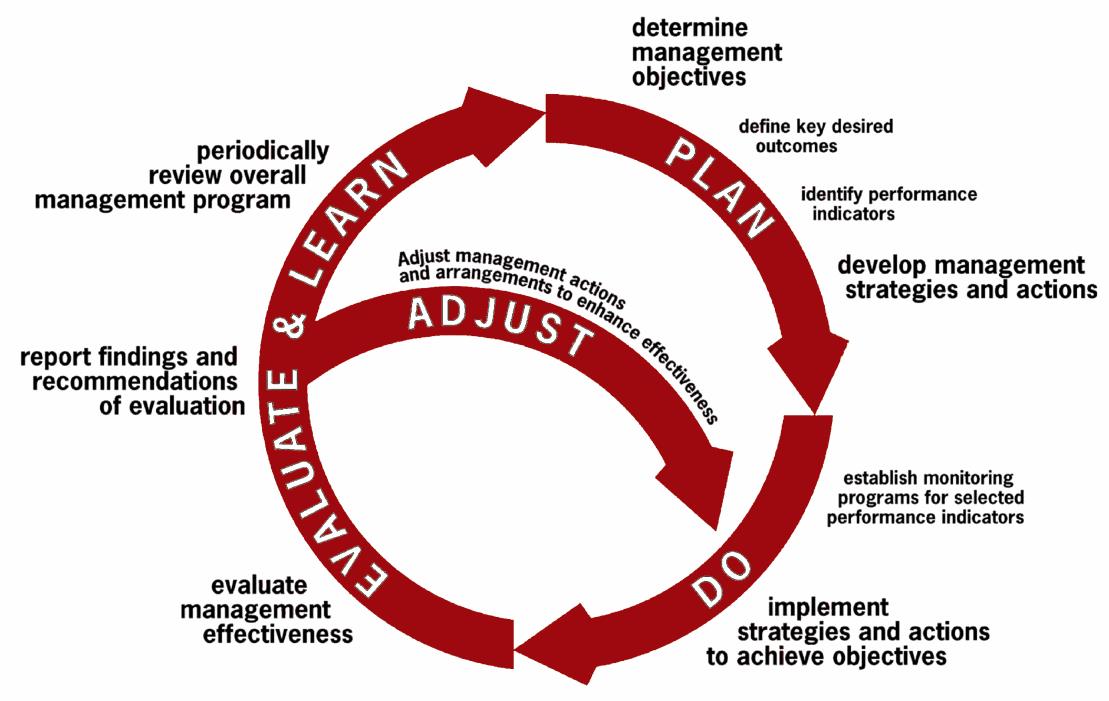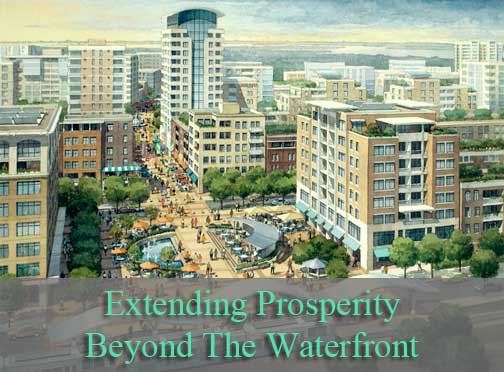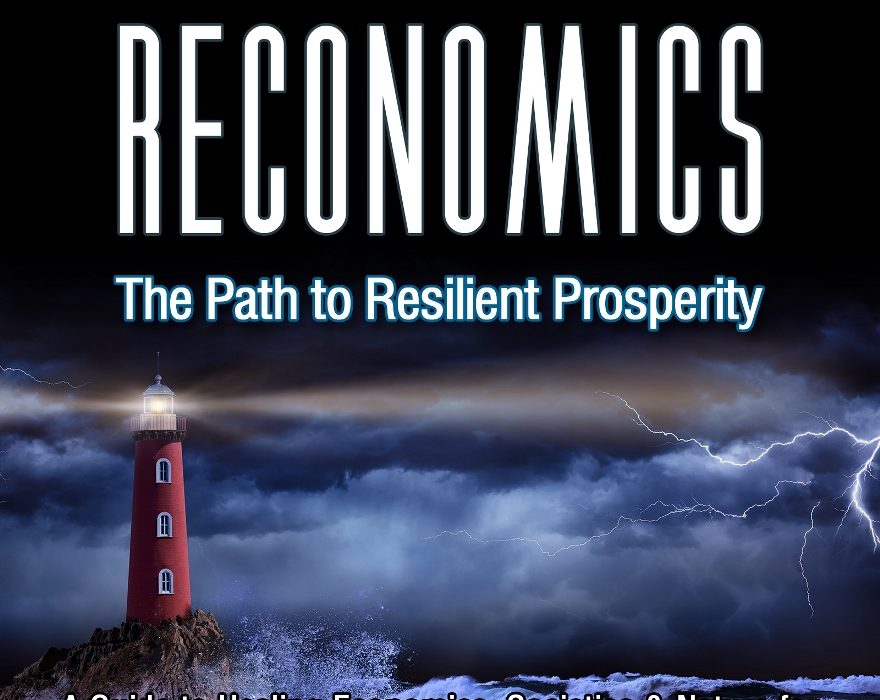It was encountering examples of ecological restoration that stimulated me to write my first book, The Restoration Economy, which came out in 2002. [While most folks think of me as an urban revitalization guy (if they think of me at all), my first love is nature.] What restoration ecologists have learned about restoring natural complex adaptive systems often provides excellent guidance to those attempting to revive urban complex adaptive systems.
The emerging discipline of adaptive management is one of the most useful example of such inter-disciplinary transference. Here are some thoughts on the subject, extracted from the current draft of my third book, RECONOMICS (coming January 2020).
ADAPTIVE MANAGEMENT MEETS COMMUNITY REVITALIZATION
I think all the government projects [to revitalize Medellín, Colombia] are good in a sense,” says Juan Carlos Anadón, Project Coordinator for the nonprofit Fundación Pazamanos. “But things are really complex when you work in the trenches of social development. You have to have flexibility to address problems you find along the way,
which people who work in government often don’t have.”
– “Slow Moving Miracle” by Sven Eberlein, YES! Magazine, Winter 2015
An Adaptive Renewal practitioner must understand mundane subjects, like real estate finance. But two leading-edge areas of knowledge set them apart:
- complex adaptive systems, and
- adaptive management.
The latter is formally defined as “a structured, iterative process of robust decision making in the face of uncertainty, with an aim to reducing uncertainty over time via system monitoring”. My definition is “a flexible management style that learns from—and quickly responds to—reality”.
There are six key processes in adaptive management: 1) assess the problem; 2) design the solution; 3) implement the solution; 4) monitor the results; 5) evaluate the results; 6) adjust the solution. For practical purposes, I normally simplify them into three pairs of related processes: 1) assess/design; 2) implement/monitor; 3) evaluate/adjust. [ Note: “solution” can be replaced with “strategy” or “plan”.]
Adaptive management is a global trend in natural resource management that has yet to be adopted to any significant degree in urban applications. This is because natural resource managers and restoration ecologists are very aware of the deficiencies in their knowledge. As a result, they have wisely developed adaptive management, in which plans are just starting points.
The business world is also catching on. Entrepreneurship professor Steve Blank (UC Berkeley) captured the spirit of adaptive management when he defined a startup as a “temporary organization searching for a repeatable business model.”
Our search for verifiable urban revitalization models, principles, taxonomies, and frameworks should start with those scientists who bring complex systems back to life as a profession: restoration ecologists. Scientists experiment on revitalizing ecosystems in ways that can’t be done on human communities. This can lead to useful insights and metaphors for thinking about cities. One of the most important lessons emerging from the restoration of natural systems is the need for adaptive management.
Urban managers seem to be less aware of their ignorance than ecosystem managers, so comprehensive plans adopted by cities are expected to function unchanged for 5, 10, or even more years. But few such plans are ever implemented, and few that are implemented succeed to any significant degree. One thing that is common to both the failures and the successes is a paucity of documentation: the process is seldom measured in any rigorous manner, so whatever lessons we learn are usually anecdotal.
Urban leaders seeking to revitalize their areas have much to learn from restoration ecology, where the results of both tactics and strategies are monitored scientifically, and the lessons published in scientific journals such as Restoration Ecology, and in practitioner journals such as Ecological Restoration. The starting point for this transition to adaptive management in urban environments will likely begin where the city and nature meet.
Here’s a quote from the 2013 “Healthy Waterways Strategy” report from Melbourne (Australia): “Melbourne Water uses adaptive management to ensure that decision making is based on sound and current knowledge. This increases our ability to carry out activities that will result in the greatest gains for waterway health. Adaptive management relies on focused monitoring, investigations and research to build our knowledge of waterways and understand changing environmental conditions, outcomes of management approaches and the effect of external drivers such as the climate crisis. We evaluate these programs to inform our planning and implementation and report outcomes to ensure knowledge is shared.”
New York City’s PlaNYC 2030 plan for adapting to climate change while accommodating 9 million new residents is well-designed (the jury is still out on whether it’s well-implemented) because it focuses on three key areas: 1) infrastructure renewal (especially green infrastructure); 2) retrofitting existing buildings; and 3) updating old building codes to current needs. Adapting the natural, built, socioeconomic, and policy/regulatory environments together is where the real magic will be found.
The best plans are not only adaptive, but are based on adapting (repurposing) existing assets. How did Chicago adapt its planning to fix its urban heat island problem, which killed 750 people in 1995? By repurposing roofs. Roofs were originally designed to shield occupants from weather. With extremely hot days on the increase, Chicago has transformed 4 million square feet of roofs into “green roofs”. Besides cooling the city, they:
- reduce flooding from storms;
- help restore Lake Michigan by reducing combined sewer overflow; and
- reduce global climate change by absorbing carbon (AKA: “climate restoration”, which should be the real goal).

Image credit: Worboys, Lockwood, De Lacy: Protected Area Management, Principles & Practice, 2nd Edition, Oxford University Press
Want a specific example of using Adaptive Management to revitalize a downtown? Look at parking policies. Some say free or cheap parking causes traffic jams and undermines efforts to improve public transit. Others say traffic jams are a good problem to have: the goal is more shoppers, so the more free parking, the better. Still others say expensive parking is best: it encourages pedestrian-friendly, transit-oriented development, and the increased revenue funds downtown improvements. Who’s right? All are.
Parking policies must adapt to current needs. If a downtown has a dearth of retail, then scaring people away with expensive, strongly-enforced parking isn’t a good idea. It only takes one parking ticket to convince a shopper that the sprawl mall is the better place to go. In that case, a switch to free parking might stimulate more visitors. This will encourage more retailers, which will stimulate more visitors, and so on in a positive feedback loop.
But if that loop continues long enough, it will eventually result in traffic jams. That will make the downtown noisy, polluted, and dangerous for pedestrians, and they’ll start coming less often. Parking fees can then be reintroduced, starting with cheap parking. If that doesn’t bring traffic down to levels that restore the quality of downtown life, they can be hiked again, until the right balance is achieved.
But then someone might say “Ah: we’ve found the right balance. Let’s engrave this parking price in stone.” Now they’re heading for trouble again, because cities are complex, living systems, and complex systems never stay the same. Stasis is death. Parking policies are deceptively simple: they are just one of myriad factors that affect the health and survival of your community. Taking an adaptive approach to policymaking is one of the core elements of resilient planning, but it’s rarely practiced.
Buildings and businesses aren’t the only things that can outlive their current form and function, failing to keep up with current needs. Building codes, zoning, development incentives, and most other aspects of governance often shift from contributing to community progress to retarding it. Keep your policies adaptive, if you wish to improve your community’s resilience to change (both internal and external).
There’s nothing new in adapting a plan to changing circumstances, or correcting a plan’s assumptions. What’s different in today’s climate of constant crisis and uncertainty is that we must expect to change our plans. The nature of planning is thus changing from predictive to adaptive (the predictive aspect was usually illusory anyway). All the institutions and external factors—the economy, the natural resources, even the weather—are now so unreliable as to demand a level of flexibility never before required.
Where there is no vision, people perish. – Proverbs 29:18
What should be adaptive, and what shouldn’t? A project (or tactic) is how one implements a plan. A plan is how one implements a strategy. A strategy is how one implements a vision. This is straightforward, but it never ceases to amaze me how often I see projects not in keeping with a plan (if, indeed, a plan even exists), or plans that lack an identifiable strategy, or strategies not based on a vision. The result is often failure.
Even if a degree of success is achieved, it will often be found that key partners or stakeholders—or the community in general—lose out along the way. Many communities fail to create a vision because they don’t know where to start. My suggestion is to start with the goal of a secure, inclusive, and green economy. You can customize that base to your own local challenges and dreams.
How to stay on-track, despite constant changes? The degree of adaptability should decrease as one progresses through the vision-strategy-plan-project taxonomy. The shared vision of the community’s future is changed least often: maybe updated once per decade (developers and investors are attracted to the safety of places that know where they’re going). Plans should be more changeable than visions.
Strategies should be more changeable than plans. And projects should be the most malleable. Any changes made to strategies, plans, and projects should reference the vision, to prevent “mission drift”. The need for adaptive management isn’t the only lesson in managing urban areas that we can derive from the science of restoring ecosystems, of course. Three examples:
- Restoration ecologists speak of “reparative restoration” (fixing damage, such as by reintroducing native species) versus “replacement restoration” (providing functional equivalents, such as hunters replacing wolves as top predators). Lesson: Cities suffering industrial flight to lower-wage countries could choose between recruiting functionally equivalent employers versus restoring jobs by “repurposing” citizens via education, training, and entrepreneurial support.
- Restoration ecologists can’t restore nature 100%, so they aim for resilience. They use “foundational” species—such as corals, seagrasses, and oysters—that form the structural basis of ecosystems and contribute most to community stability. Nature then takes over, repairing itself and diversifying without further intervention. Lesson: With limited funding, public leaders must focus on reaching the revitalization tipping point, where the free market takes over. This often involves renewing foundational assets; infrastructure, water, heritage, public services, etc.
- Here’s a quote from the paper “The Rapid Riparian Revegetation (R3) Approach” in Ecological Restoration (June 2014): “With hundreds of thousands of kilometers of riparian corridors in need of restoration, and limited public funds for implementation, practitioners need to identify strategies that lower the unit cost and accelerate the pace of reestablishment of native riparian forests in sustainable ways. The R3 approach is grounded in ecological principles and geared towards producing outcomes consistent with restoration programming and the human desire to see “progress” for the investments made.” Lesson: Replace “riparian corridors” with “cities”, have R3 stand for “rapid resilient renewal”, and this passage describes good urban strategies.
The movement towards design-build procurement over the past 15 years or so (in the U.S.) has greatly increased the ability of projects to adapt to the availability of new tools, materials, and technologies. This is primarily due to the related adoption of performance specifications over prescriptive specifications. The former focuses on achieving the desired goals in the best way possible, whereas the latter focuses on following static instructions.
No plan can anticipate every event that might help or hinder a company trying to achieve its strategic objectives. Managers and employees at every level need to adapt to facts on the ground, surmount unexpected obstacles, and take advantage of fleeting opportunities. Strategy execution, as we define the term, consists of seizing opportunities that support the strategy while coordinating with other parts of the organization on an ongoing basis. When managers come up with creative solutions to unforeseen problems or run with unexpected opportunities, they are not undermining systematic implementation; they are demonstrating execution at its best. Such real-time adjustments require firms to be agile.
– “Why Strategy Execution Unravels” by Donald Sull, Rebecca Homkes, & Charles Sull,
Harvard Business Review, 3/2015
But we haven’t seen a similar level of evolution on the planning side. A widespread obstacle is what engineers refer to as “conflicting constraints”, whereby being in accordance with one set of instructions puts one in violation of others. In manufacturing, suppliers say “you can have it faster, cheaper, or better: pick two”. The budget, scope, and schedule of a project are conflicting constraints. Reduce the time for delivery, and you’ll need to hire more people (increase the budget), or reduce the scope. In urban redevelopment, the fact that public agencies operate in silos—infrastructure, environment, economic development, planning, heritage, arts, etc.—impedes the resolution of conflicting constraints.
Adaptive Renewal can go a long way towards avoiding conflicting constraints, or speeding their resolution. It does this both by bringing them to light, and by forcing agencies to take a more holistic approach to community management. Adaptive Renewal produces ‘living” plans and policies, which is appropriate, since they affect living communities. If you can’t change the goals, change the constraints.
New Jersey did this brilliantly with their Smart Code program (documented in my 2002 book, The Restoration Economy). In 1996, New Jersey overhauled their rigid, antiquated fire codes. Designed for new construction, the old codes made reusing old buildings cost-prohibitive, which constrained urban revitalization. Their Smart Code program gave redevelopers the flexibility they needed to adapt and renovate old industrial buildings in ways that complied with modern building codes for fire and safety, without busting the budget.
The Smart Code program cost New Jersey virtually nothing to implement, and triggered an instant explosion of reuse projects statewide. Renewal of existing buildings in New Jersey’s 16 largest cities rose 62.5%, from $363.3 million in 1997 to $590.4 million in 1999.
We might call this biomimicry-based urban revitalization. The research possibilities are endless, as are the useful metaphors. For instance, there’s a global trend towards restoring rivers by removing outdated dams. Once removed, migratory fish—whose spawning grounds have sometimes been blocked for over a century—return, revitalizing economies and ecosystems. A 2014 study by Oregon State University revealed that undammed “rivers can return surprisingly fast to a condition close to their natural state”.
Many places have significant private money ready to flow into regenerative activities. But antiquated policies, incentives, zoning, and building codes block their “migration”. Unblocked, revitalization can be surprisingly fast. New Jersey’s policy revisions were “bureaucratic dam removal”. Yyon Chouinard, CEO of Patagonia, says “Time and again, I’ve witnessed the celebration that comes with the removal of an unnecessary dam. After a river is restored and the fish have returned you never hear a single person say, ‘Gee, I wish we had our dam back’.” Neither does New Jersey mourn the loss of their old fire codes.
Experts sometimes refer to “passive” vs. “active” adaptive management. Passive adaptive management is normal planning plus the monitoring and evaluation of results. Common sense, in other words. The passive form was invented to allow traditional managers to say they use adaptive management when they don’t have the courage for it. The active form is what we’ve been discussing here.
Thomas Edison said “Our greatest weakness lies in giving up. The most certain way to succeed is always to try just one more time.” Few disagree. But many places do give up, and citizens acquiesce. We seem to believe that—unlike individuals—some communities simply can’t revitalize. That’s nonsense. Adaptive management has no endpoint. It keeps the process going. In that way, it can’t fail.
Adaptive management of regeneration and resilience work is the path to Resilient Prosperity in these increasingly broken and unstable times.
 Jersey City has been rebounding since the state adapted its building codes to redevelopment, rather than development. Above: artist’s rendition of Journal Square, their next step in revitalization.
Jersey City has been rebounding since the state adapted its building codes to redevelopment, rather than development. Above: artist’s rendition of Journal Square, their next step in revitalization.
About the Author
Storm Cunningham is the publisher of REVITALIZATION, a new twice-monthly global magazine (http://revitalization.org ).
Since 2002, he has been a full-time revitalization coach to organizations, communities, and regions. He is also a professional speaker and workshop leader on community revitalization, economic resilience, and natural resource restoration. His clients include national and local governments, universities, and non-profits in over a dozen countries.
He lives in Arlington, Virginia, and is the author of two highly-acclaimed books:
The Restoration Economy (Berrett-Koehler, 2002), and Rewealth (McGraw-Hill Professional, 2008).
See http://RestorationEconomy.com and http://Rewealth.com for more information about these books.
His third book, RECONOMICS, will be published in November of 2019.
See http://StormCunningham.com for more on his work.
Storm can be reached at 1-703-887-2142, or at storm@revitalization.org

